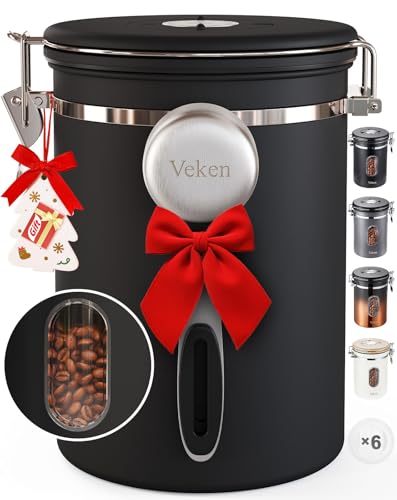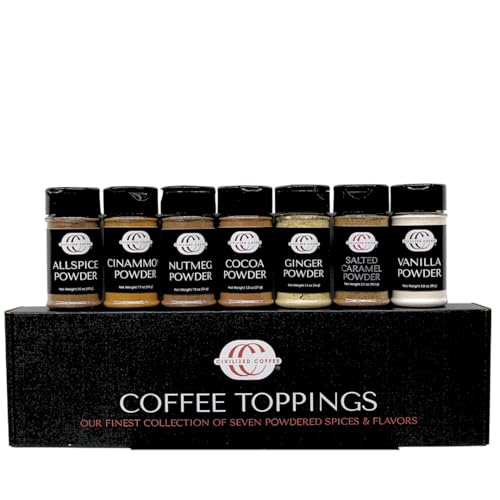We’ve all been there – it’s early morning and you need your coffee fix fast. While freshly ground beans might be the gold standard, instant coffee has earned its place as the ultimate convenience brew. Don’t let coffee snobs fool you – when made properly, instant coffee can deliver a surprisingly satisfying cup that’ll kickstart your day.
The beauty of instant coffee lies in its simplicity and speed. We’re talking about a perfect cup in under two minutes with minimal cleanup and maximum flavor. Whether you’re rushing to work, camping in the wilderness, or simply want a quick afternoon pick-me-up, mastering the art of instant coffee is a skill that’ll serve you well.
The secret isn’t just dumping powder into hot water – there’s actually a technique that transforms ordinary instant coffee into something you’ll genuinely enjoy. We’ll show you how to unlock the full potential of those humble granules and create a cup that rivals your favorite coffee shop.
What You’ll Need
Making instant coffee requires minimal equipment and ingredients. We’ll walk you through everything necessary to create your perfect cup.
Equipment
Our instant coffee setup requires just a few basic kitchen items you likely already have on hand:
- Coffee mug or cup
- Kettle or microwave for heating water
- Teaspoon for stirring
- Measuring spoons (optional for precision)
Ingredients
- 1 to 2 teaspoons instant coffee granules or powder
- 6 to 8 ounces hot water (not boiling)
- Sugar or sweetener to taste (optional)
- Milk or cream to taste (optional)
- Pinch of salt (optional for flavor enhancement)
Instructions
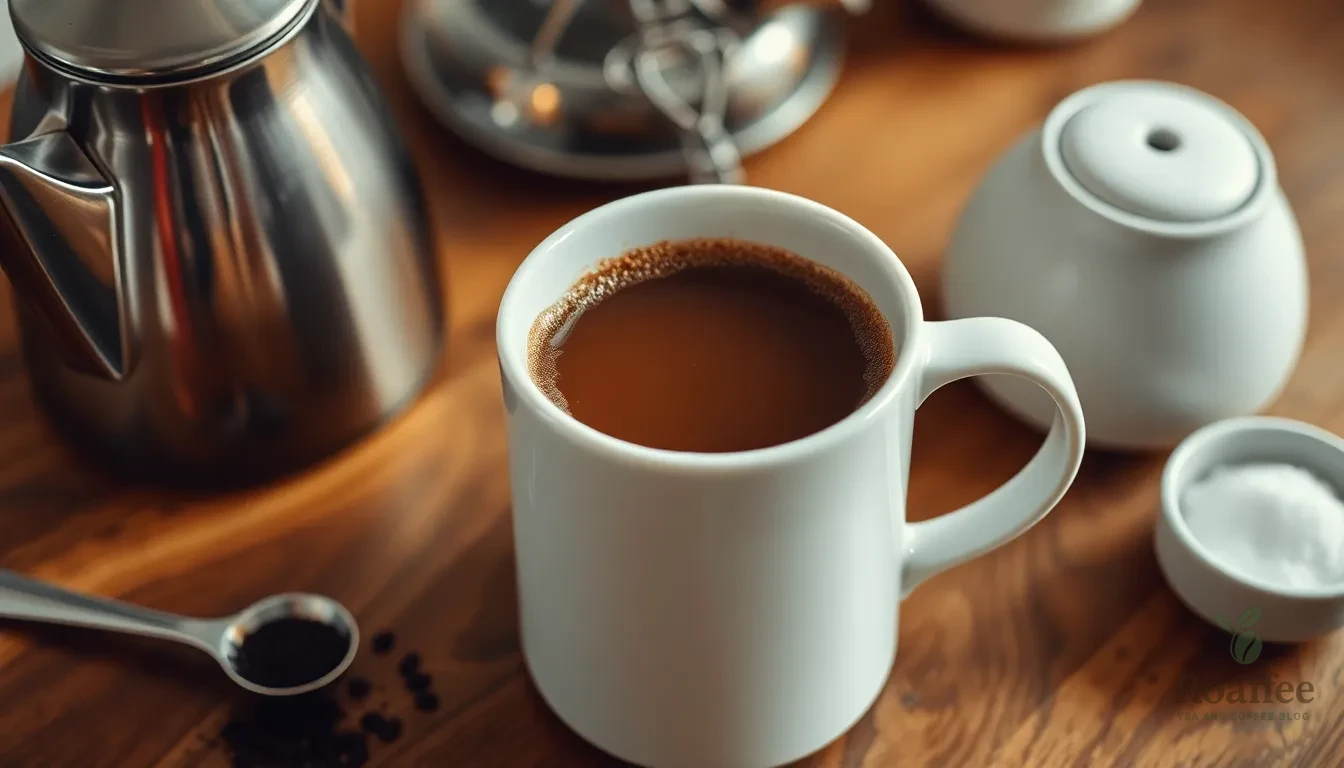
We’ll walk through the simple four-step process to create the perfect cup of instant coffee. These straightforward steps ensure consistent results every time.
Heat the Water
Start by boiling fresh water in your kettle or pot. Once the water reaches a rolling boil, remove it from heat and let it sit for about one minute. This brief cooling period brings the water to the optimal temperature for dissolving instant coffee granules without creating a bitter taste. The ideal water temperature sits just off the boil, which preserves the coffee’s intended flavor profile.
Measure the Coffee
Add 1 to 2 teaspoons of instant coffee granules to your mug, using approximately 2 grams per cup. We recommend starting with the lower amount if you prefer milder coffee or increasing to 2 teaspoons for a stronger brew. The measurement should correspond to 200 to 240ml of water for proper balance. Adjust these proportions based on your personal taste preferences and the strength you desire.
Add Hot Water
Pour the hot water directly over the instant coffee granules in your mug. For iced coffee preparation, first dissolve the granules in about 1 tablespoon of hot water, then add cold water or ice to reach your desired temperature. The hot water should completely cover the granules to ensure even dissolution. Pour steadily to avoid splashing and maintain the proper coffee to water ratio.
Stir and Serve
Stir the mixture for several seconds until all granules completely dissolve in the water. Watch for any remaining particles and continue stirring until the liquid appears smooth and uniform. Add milk, cream, sugar, or sweeteners according to your taste preferences. The coffee is ready to serve immediately once all ingredients are fully incorporated.
| Step | Details |
|---|---|
| Heat the Water | Boil water, then wait ~1 minute off boil |
| Measure Coffee | 1-2 teaspoons (about 2g) per 200-240ml water |
| Add Hot Water | Pour hot water over granules; dissolve fully |
| Stir and Serve | Stir until dissolved; add milk, sugar if desired |
Tips for Perfect Instant Coffee
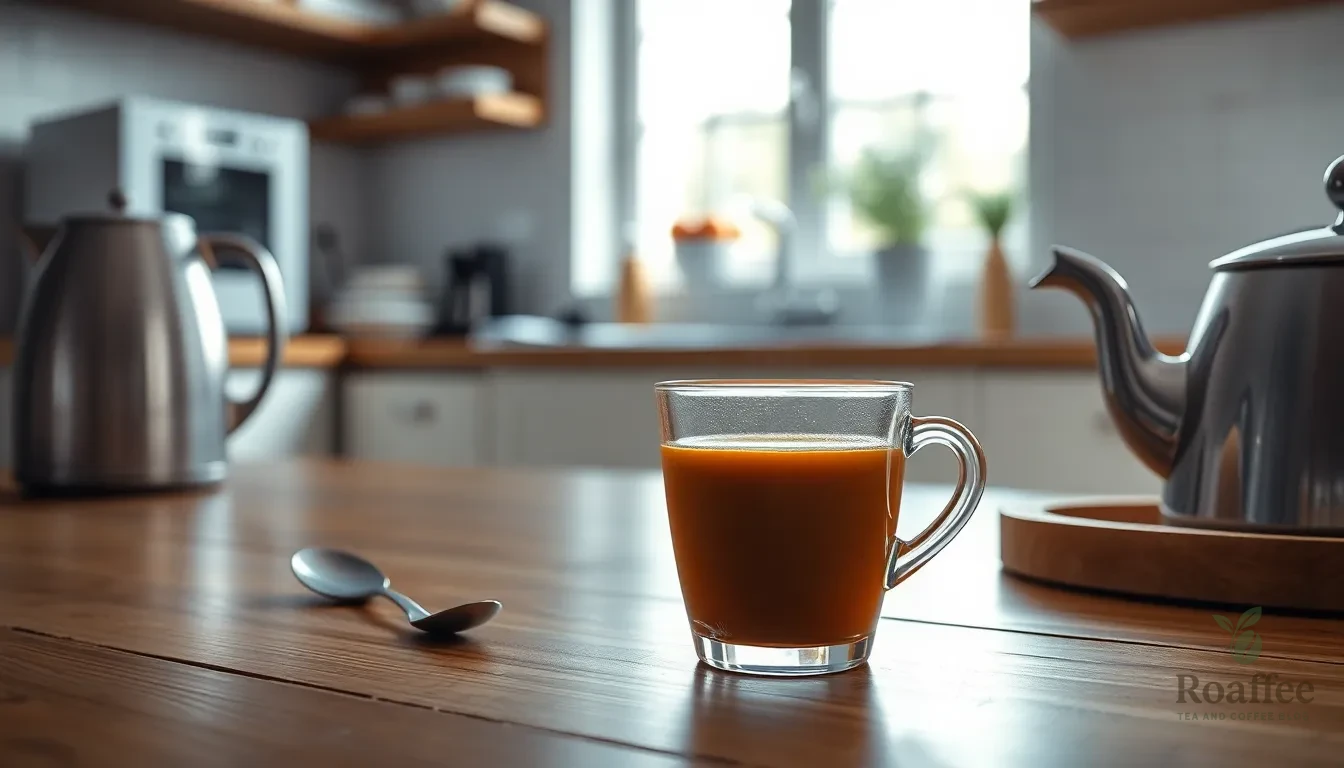
Mastering these essential techniques will transform your instant coffee from ordinary to exceptional. We’ve gathered expert guidelines to help you achieve consistently delicious results every time.
Water Temperature Guidelines
We recommend heating water to 90-95°C (194-203°F) for optimal extraction without creating a burnt taste. Let boiled water rest for about one minute before pouring to reach this ideal temperature range.
Some coffee experts suggest using slightly cooler water around 170-180°F (77-82°C) to prevent bitterness from developing. We find this lower temperature particularly effective for delicate instant coffee varieties.
| Temperature Range | Result |
|---|---|
| 90-95°C (194-203°F) | Optimal dissolution, no burnt taste |
| 77-82°C (170-180°F) | Prevents bitterness, gentler extraction |
| 100°C (212°F) | Too hot, may cause burnt flavor |
Always avoid pouring boiling water directly onto granules as this can shock the coffee and create unpleasant flavors.
Coffee to Water Ratios
We use 2 grams (1 heaped teaspoon) of instant coffee per 200ml of water as our standard ratio for balanced strength. This measurement delivers consistent flavor without overpowering the palate.
For those who prefer different strengths, we suggest starting with 1 teaspoon per 6 ounces (180ml) of water and adjusting according to taste preferences. Stronger coffee lovers can increase to 1.5 teaspoons while those seeking milder flavors should reduce to 3/4 teaspoon.
| Coffee Amount | Water Volume | Strength Level |
|---|---|---|
| 3/4 teaspoon | 6 oz (180ml) | Mild |
| 1 teaspoon | 6 oz (180ml) | Standard |
| 1.5 teaspoons | 6 oz (180ml) | Strong |
| 2 grams | 200ml | Balanced |
Stirring Techniques
We always stir thoroughly until all granules dissolve completely to ensure consistent flavor distribution. Incomplete dissolution leaves bitter pockets that can ruin the entire cup.
For smoother results, we add a small splash of cold water (10-20ml) to the granules before adding hot water. This technique prevents clumping and creates better dissolution.
Another effective method involves creating a concentrated slurry by dissolving coffee first in a small amount of room temperature water. We then add the hot water gradually while stirring continuously to avoid clumps and reduce bitterness.
We recommend preheating your mug by rinsing with hot water and discarding it before adding coffee. This simple step keeps your coffee warm longer and enhances the overall drinking experience.
Flavor Variations
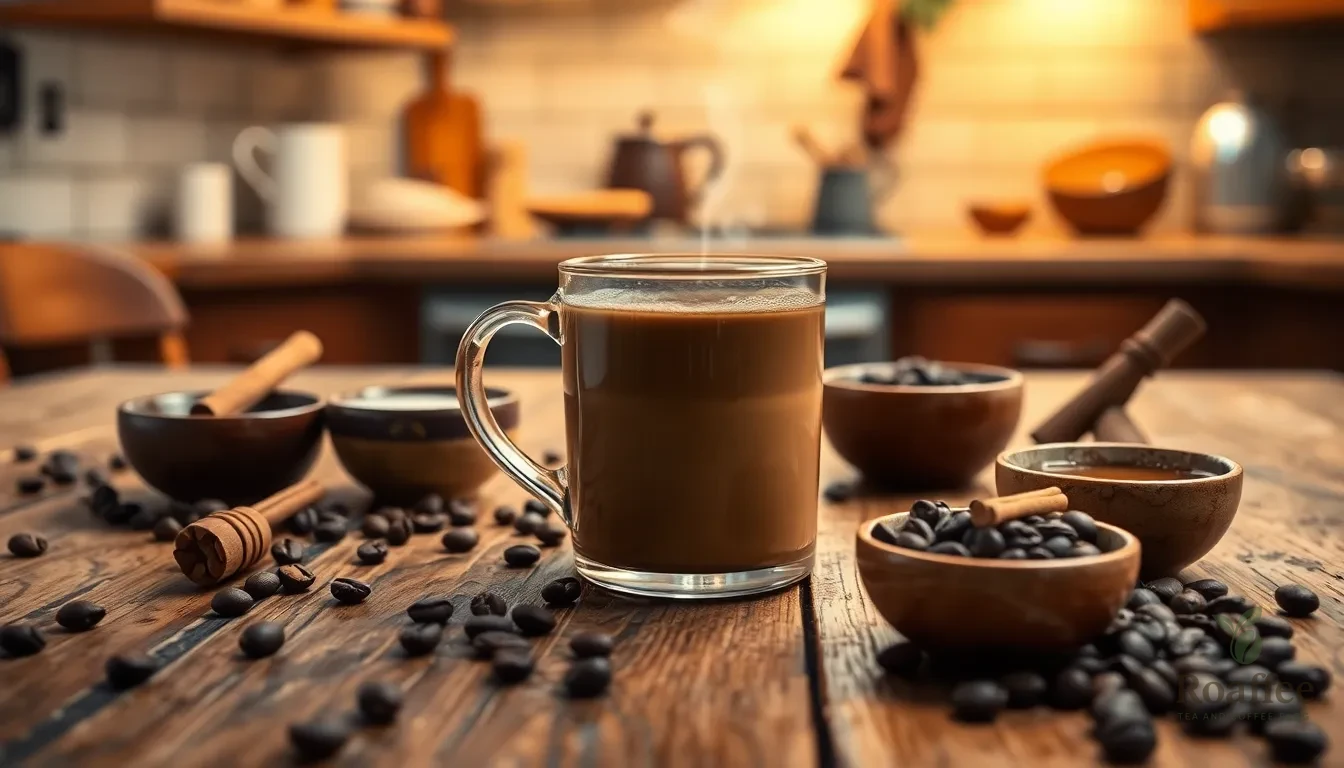
We can transform our basic instant coffee into a personalized beverage by exploring different flavor modifications and additions. The beauty of instant coffee lies in its versatility to accommodate various taste preferences and dietary needs.
Adding Milk or Cream
We recommend incorporating milk or cream to enhance the richness and texture of our instant coffee. Traditional dairy milk provides a classic creamy foundation that balances the coffee’s intensity. Non-dairy alternatives like almond, oat, or coconut milk offer distinct flavor profiles while accommodating dietary restrictions.
The amount of milk we add depends on our preference for coffee strength and creaminess. Start with a small splash and gradually increase until we achieve our desired taste. Heavy cream creates an indulgent, rich texture that transforms our instant coffee into a luxurious drink experience.
Sweetening Options
We can elevate our instant coffee beyond traditional sugar by exploring natural sweeteners that add unique flavor dimensions. Honey brings floral notes and natural sweetness that complements coffee’s earthiness. Maple syrup introduces a subtle caramel undertone that pairs beautifully with the coffee’s robust flavor.
Agave syrup offers a neutral sweetness that won’t overpower the coffee’s natural taste. These natural alternatives provide sweetness while contributing their own distinctive flavors to create a more complex drinking experience.
Flavor Enhancements
We can customize our instant coffee with spices and syrups to create cafe-quality beverages at home. Cinnamon adds warmth and subtle sweetness without additional calories. Nutmeg provides a sophisticated, slightly sweet complexity that enhances the coffee’s natural flavors.
Cardamom offers an exotic, aromatic quality that transforms our basic instant coffee into something special. Flavored syrups like vanilla, caramel, or hazelnut create themed coffee experiences. We can also experiment with flavored instant coffee varieties that come pre-infused with these popular taste profiles.
For iced variations, we dissolve our instant coffee in hot water first, then add cold water or ice to create refreshing cold beverages perfect for warmer weather.
Storage and Shelf Life
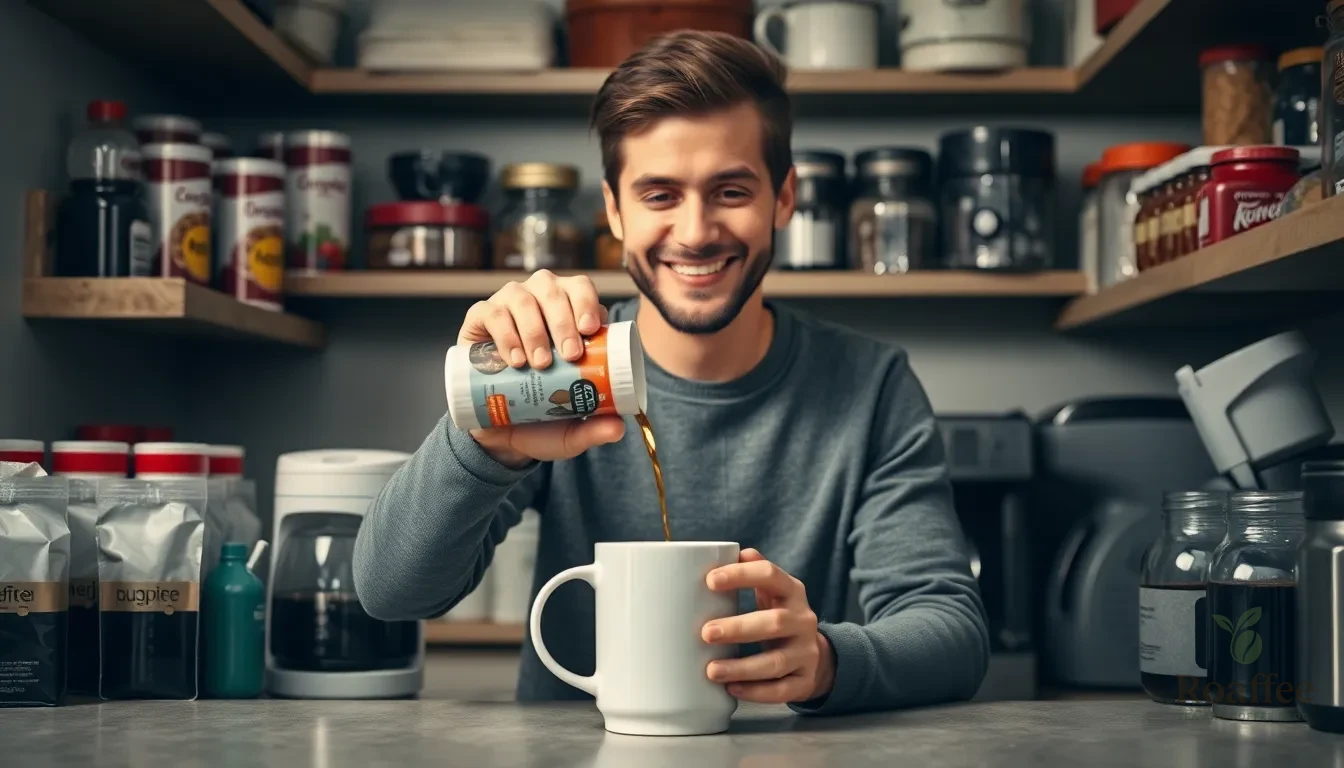
Proper storage transforms instant coffee from a simple convenience into a long-lasting pantry staple. We can maximize both flavor and shelf life by understanding the key principles of coffee preservation and following proven storage techniques.
Understanding Instant Coffee Shelf Life
Unopened instant coffee demonstrates remarkable longevity when stored correctly. The shelf life varies significantly based on packaging and preservation methods used during manufacturing.
| Storage Condition | Shelf Life |
|---|---|
| Unopened instant coffee | 2-20 years |
| Opened instant coffee | 6-12 months |
| Optimal flavor retention | First 6 months after opening |
Essential Storage Guidelines
We recommend storing instant coffee in an airtight container to prevent moisture and oxygen exposure. Both elements actively degrade coffee quality and can compromise the flavor profile we worked to perfect in our brewing process.
Location matters significantly for preserving instant coffee. We should keep containers in cool, dark places like pantries or cupboards, away from direct sunlight, heat sources, and humidity. Refrigerators and freezers present moisture risks unless the coffee is sealed perfectly, making room temperature storage the preferred option.
Maintaining Coffee Quality
Regular inspection helps us identify potential issues before they affect our coffee experience. We should check for signs of mold or moisture contamination during routine use, especially in humid environments.
Clean, dry utensils prevent contamination when scooping coffee. We avoid introducing moisture or foreign particles that could compromise the entire container by using dedicated coffee spoons that remain dry between uses.
Maximizing Flavor Retention
Even properly stored instant coffee experiences gradual flavor decline over time. We achieve optimal taste by consuming opened containers within six to twelve months, though the coffee remains safe to drink beyond this timeframe.
Temperature fluctuations accelerate flavor degradation, so we maintain consistent storage conditions. The cool, stable environment of a pantry cupboard provides ideal conditions for preserving the coffee’s original characteristics.
This storage approach ensures our instant coffee maintains the quality needed for the perfect cup we learned to create, making it a reliable and convenient coffee solution for months or even years when stored unopened.
Troubleshooting Common Issues
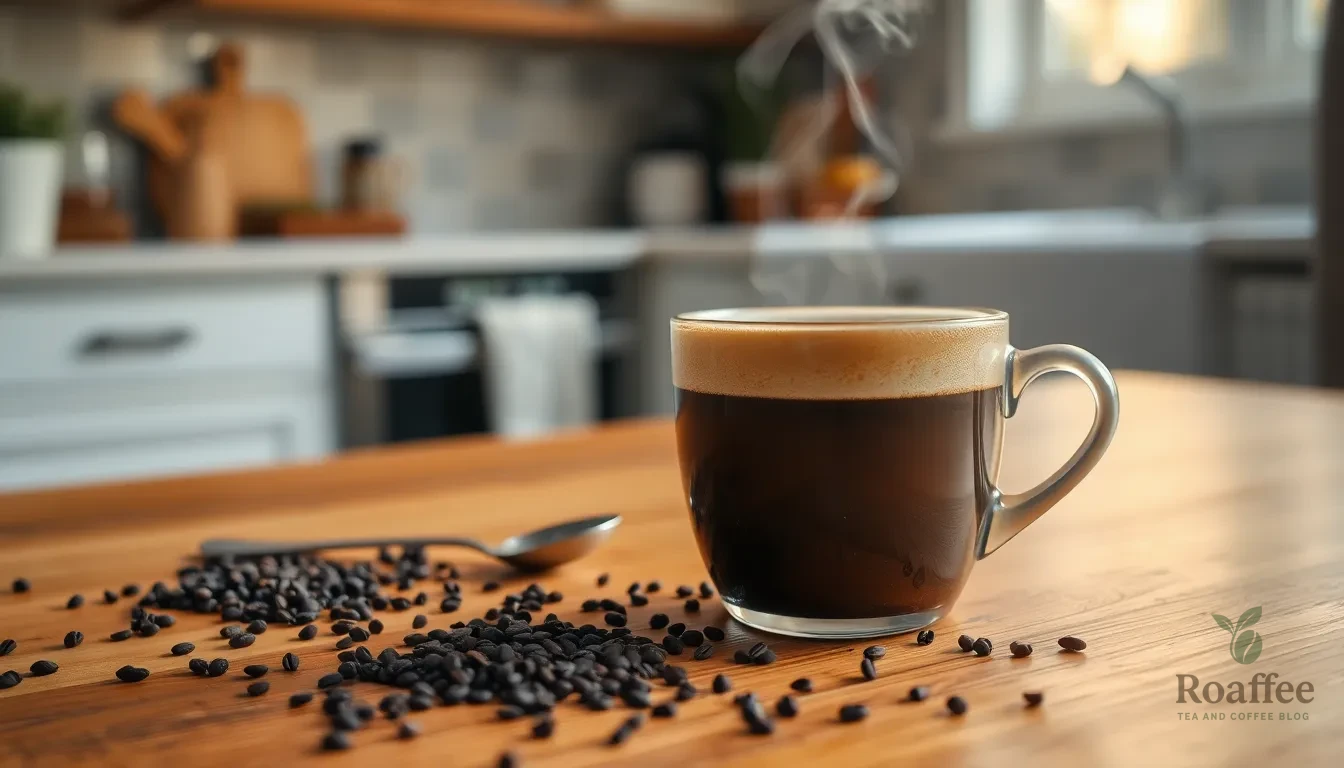
Even with the simplest coffee preparation methods, we sometimes encounter challenges that affect our final cup. Understanding these common problems helps us achieve consistent results every time we brew instant coffee.
Water Temperature Problems
Water temperature stands as the most critical factor in instant coffee preparation. When we use water that’s too hot, it can create a bitter taste that overwhelms the coffee’s natural flavors. Steam rising from freshly boiled water indicates temperatures near 100°C (212°F), which exceeds the optimal range. We recommend letting boiled water sit for one minute to cool slightly before pouring.
Conversely, water that’s too cold fails to dissolve the coffee granules completely. This creates an uneven extraction that leaves undissolved particles floating in our cup. The ideal temperature range falls between 90-95°C (194-203°F) for complete dissolution without bitterness.
Coffee to Water Ratio Issues
Weak coffee typically results from using too little instant coffee relative to water volume. Our standard recommendation calls for 2 grams or 1 heaped teaspoon of instant coffee per 200ml of water. When coffee tastes too weak, we increase the coffee quantity rather than decrease the water amount.
Strong or overpowering coffee occurs when we use too much instant coffee. This creates an intense flavor that can become unpleasant. We adjust by reducing the coffee amount or adding more hot water to achieve the desired strength.
Insufficient Mixing
Incomplete dissolution creates an uneven coffee experience with concentrated pockets of flavor. Granules that remain undissolved sink to the bottom of our cup, creating an unpleasant grainy texture. We ensure thorough stirring by mixing for at least 30 seconds until all granules disappear completely.
Poor agitation techniques can also affect flavor distribution. We stir in circular motions to create a small vortex that helps dissolve stubborn granules. The mixing process should continue until the liquid appears uniform without any visible particles.
Rushing the Process
Impatience during preparation often leads to suboptimal results. When we pour water too quickly over the granules, it can create clumps that resist dissolution. We pour water slowly and steadily to ensure even contact with all coffee particles.
Also, serving coffee immediately after mixing doesn’t allow flavors to meld properly. We let our coffee rest for 15-30 seconds after stirring to allow complete flavor development before taking the first sip.
Conclusion
We’ve shown you that making exceptional instant coffee isn’t just about adding hot water to granules. By mastering the fundamentals of water temperature coffee-to-water ratios and proper mixing techniques you can transform your daily coffee routine into something truly satisfying.
The beauty of instant coffee lies in its versatility and convenience. Whether you’re creating a quick morning cup or experimenting with flavored variations you now have the knowledge to make each cup count. With proper storage techniques your instant coffee will remain fresh and flavorful for months.
Remember that great coffee starts with attention to detail. Take those extra few seconds to get the temperature right and mix thoroughly – your taste buds will thank you for it.
Frequently Asked Questions
How long does instant coffee last once opened?
Opened instant coffee retains optimal flavor for the first 6 months and can last 6 to 12 months overall when stored properly. Keep it in an airtight container in a cool, dark place away from moisture and temperature fluctuations. Regular inspection for contamination and using clean utensils helps maintain quality throughout its shelf life.
What’s the perfect water temperature for instant coffee?
The optimal water temperature for instant coffee is 90-95°C (194-203°F). If you want to avoid bitterness, use slightly cooler water at 77-82°C (170-180°F). Boil fresh water and let it cool for about one minute before pouring over the coffee granules for best results.
How much instant coffee should I use per cup?
Use 1 to 2 teaspoons of instant coffee granules per cup, which equals about 2 grams per 200ml of water. This provides a balanced strength that you can adjust based on your taste preferences. Start with less and add more if you prefer a stronger cup.
Can I make iced coffee with instant coffee?
Yes! To make iced instant coffee, first dissolve the granules in a small amount of hot water to create a concentrated mixture. Then add cold water or ice to reach your desired strength and temperature. This method ensures the coffee dissolves completely and prevents a gritty texture.
What are the best ways to enhance instant coffee flavor?
Add milk or cream for richness, natural sweeteners like honey or maple syrup for depth, and spices like cinnamon or nutmeg for complexity. You can also create a coffee slurry by adding a splash of cold water before hot water, or preheat your mug to maintain optimal temperature.
How should I store instant coffee to maintain freshness?
Store instant coffee in an airtight container in a cool, dark place away from moisture and heat sources. Avoid the refrigerator or freezer as temperature fluctuations can cause condensation. Always use clean, dry utensils when scooping to prevent contamination and maintain quality.
Why does my instant coffee taste bitter?
Bitter instant coffee usually results from water that’s too hot (above 95°C/203°F) or over-extraction. Let boiling water cool for about one minute before adding it to the coffee granules. Also, ensure you’re not using too much coffee relative to water, as this can create an overpowering, bitter taste.
How long does it take to make perfect instant coffee?
Making perfect instant coffee takes under two minutes with minimal cleanup. The process involves heating water, measuring coffee granules, pouring hot water over the granules, stirring until dissolved, and adding any desired milk or sweeteners. The key is allowing flavors to meld briefly before serving.












